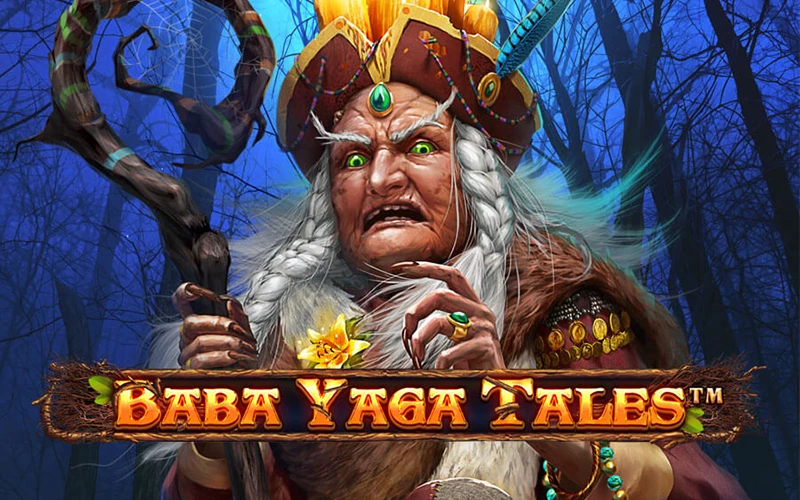Играйте в Авиатор Pin Up и становитесь победителями
Наш проект Aviator24 собрал информацию о всех легальных казино онлайн, где вы можете играть в игру "Авиатор" на деньги в Казахстане. Чтобы получить бонусы и начать играть в "Авиатор" на реальные деньги, вам достаточно внести депозит в размере 100 рублей. Теперь ваше внимание переключается на самолет - следите за ним.
Опытные игроки знают, что файлы Aviator hack apk могут нанести вред вашему устройству и не являются эффективными. Это мошенническое программное обеспечение, которое может получить доступ к вашей личной информации. Оно основано на искусственном интеллекте, который предсказывает время крушения самолета. Однако на практике использование такого программного обеспечения неэффективно и вредно для вашего устройства. Чтобы получить право на вывод выигрышей, вам нужно пройти процесс верификации.
- Для того чтобы быть в курсе последних предложений и других интересных акций, рекомендуется регулярно посещать раздел "Бонусы и акции" на нашем сайте.
- Учитывая, что игра уже существует несколько лет, существуют различные стратегии для нее.
- Если вы делаете ставку в ручном режиме, каждый шаг должен составлять 5 рублей.
- Пополнение счета на 1xbet происходит быстро и безопасно, занимая минимум времени.
- Интерфейс меню довольно обширный и предоставляет четыре основных варианта для размещения ставок.
Игра "Авиатор" имеет высокие риски, но в случае победы может принести самую крупную отдачу. Интерфейс и характеристики игры получают много положительных отзывов от гемблеров. Клиенты отмечают удобное и интуитивно понятное управление, а также наличие встроенных навигационных панелей.
Почему Aviator является безопасной игрой
Вам совершенно не нужно указывать точную цифру, которая будет на кону в конце игры, вам просто нужно выбрать диапазон "Больше" или "Меньше". Мелкие суммы обычно используются для тренировок или для проб и ошибок новой тактики игры. Продолжительность каждой игры "Aviator" в Pin Up колеблется от 8 до 30 секунд. Да, если вам исполнилось 21 год на момент регистрации. Клиентам, не достигшим совершеннолетия, доступна только демонстрационная версия.
- У клиентов онлайн-казино Pin Up регистрация не вызывает никаких сложностей, ее можно выполнить на официальном сайте азартного ресурса или по нашей ссылке.
- Благодаря этому в демо режиме просто отыграть не получится.
- Aviator - это игра, в которой вы делаете ставку на самолет.
- Более того, казино щедро предлагает различные бонусы и промо-акции, чтобы максимально увеличить спрос на своих игроков.
- Для новых пользователей имеется приветственный бонус и возможность получить бесплатные вращения.
Необходимо предугадать момент разрушения и успеть забрать свой выигрыш до этого случая. Как только аппарат поднимается в воздух, начинается рост коэффициента. Чем выше Авиатор поднимется, тем выше будет множитель для вашей ставки. Оператор Казино Чемпион всегда в курсе последних новинок в игровой индустрии. Этот эмулятор никак не связан с другими играми азартных развлечений и предлагает пользователям возможность сразиться за самые высокие выплаты.
Переключение игрового процесса в ручной режим не требуется. Геймер самостоятельно завершает активную игровую сессию. Для этого необходимо нажать на кнопку "ставка", после чего выигрыш автоматически зачисляется на баланс аккаунта. Однако, не всем игрокам удается сделать это сразу. В 1Хбет не обязательно проходить верификацию. Посетителю достаточно заполнить небольшую анкету и войти в профиль, используя номер телефона.
Эта функция позволяет делать ставки автоматически. Коэффициент определяется на основе анализа текущих побед и турнирной таблицы. Ее можно активировать на панели ставок в разделе "Авто". Приложение и зеркало не имеют значения, этот онлайн-слот позволит вам хорошо заработать и воспользоваться бонусной программой.
Тут есть возможность воспользоваться удачной случайностью и обеспечить себя в случае потери денег. Как и в большинстве азартных игр, можно использовать несколько общих рекомендаций, которые помогут улучшить игровой процесс и достичь своей цели. На экране эмулятора можно увидеть количество активных игроков в данный момент. В чате есть возможность знакомиться с другими пользователями, обсуждать стратегию, делиться чувствами и просто приятно болтать.
Как вывести выигрыш в Авиатор?! – Быстрый вывод средств
Крупные выигрыши станут обыденностью в легкой доступности. При возникновении затруднений, игроки могут обратиться за помощью к команде поддержки. Чтобы проверить возможности игры, вы можете сделать минимальный депозит всего 1$ – это очень удобно. Представьте, что вложив всего 100 рублей, вы можете выиграть десятки и сотни тысяч рублей – и таких счастливчиков было немало. Pin up aviator создает надежную игровую среду для игроков всех уровней. Все финансовые операции защищены современными технологиями безопасности. Ваши депозиты и снятие средств будут обработаны безопасно.
- Если игрок не остановил игру до этого момента, он получает победу, и его ставка умножается на 30.
- Игра представляет собой растущую кривую, которая может разрушиться в любой момент.
- Много игроков отмечают уникальный и захватывающий геймплей игры, а также простоту и интуитивность её интерфейса.
- Установочный файл обычно имеет небольшой размер и вам не придется долго ждать результатов.
- Процесс игры заканчивается внезапно, и гемблер должен остановить его раньше, чем автомат это сделает.
- На основных казино-сайтах при включенном VPN вы можете найти игру без каких-либо проблем.
- Этот сайт содержит ссылку на официальный ресурс игры.
За последние несколько лет игры с живыми дилерами стали очень популярными. Здесь клиенты Pinup могут ощутить атмосферу реального казино, сражаясь за победу с настоящими дилерами и соперниками. Заявки на подтверждение обрабатываются в течение суток. Если она положительна, клиент может запросить вывод средств.
Игра Авиатор казино Pin-Up
В “Авиаторе” генерация результата происходит не на серверах онлайн-казино, а непосредственно с участием игроков. Это означает, что все игроки могут проверить результаты раунда, а не просто доверять лицензиям разработчиков, не имея представления о внутреннем механизме. В игре "Авиатор" есть функция, которая позволяет проверить честность каждого раунда. Для этого в верхней части игрового окна можно посмотреть и нажать на коэффициенты, которые были использованы в предыдущих играх. Открывшееся окно покажет серверный сид, 3 сида игроков, комбинированный хеш и результат раунда. Вы всегда можете проверить правильность хеша, используя онлайн-калькулятор.
В самом начале каждого уровня он спавнится на поле игры. Когда самолет находится в поле зрения, процент выплаты увеличивается. Целью является успевать выводить деньги на игровой счёт. Так что, если возникает сомнение, стоит ли играть в игру "Авиатор" в онлайн-казино, не следует пренебрегать ей. Одной из основных деталей, на которую стоит обратить внимание при выборе игры "Авиатор" в онлайн-казино, являются функции автоматических ставок, которые включены в интерфейс.
Пользовательский опыт зависит от данного параметра. Некоторые заведения не поддерживают оплату криптовалютой, в то время как для других это единственный способ пополнить баланс. Учтите этот фактор перед выбором азартного проекта. На сегодняшний день на рынке есть множество платформ, где можно играть на реальные деньги, и у каждой из них есть свои преимущества и недостатки. Большой выбор казино часто становится проблемой для игроков, но есть способы быстро выбрать подходящую игровую платформу.
Игровые заведения устанавливают случайный коэффициент, который начинает стремительно возрастать. В любой момент времени, вы можете остановиться и забрать свой выигрыш. Однако, если значение коэффициента (который символизирует рост) упадет до того момента, как вы сможете зафиксировать свою прибыль, то вы потеряете сумму вашей ставки. Коэффициенты могут быть огромными - даже до 1000, но также они могут начинаться с небольшого значения, например, 1.01. Вы можете выбрать любую компанию для комфортной игры в браузере или на мобильном устройстве. Во многих игровых заведениях игроки могут сделать ставку от 1 рубля.
Приведу пример: ты можешь поставить на победу одного авиатора в одной гонке и на другого авиатора в другой гонке. Они оба должны выиграть, чтобы ты получил выигрыш. Такие комбинированные ставки требуют более глубокого анализа и оценки вероятности каждого события, но в случае успеха они могут приносить значительные выигрыши. Важно помнить, однако, что риск также возрастает, поскольку вероятность успеха каждого отдельного события снижается.
Кроме этого, необходимо помнить о взаимосвязи между риском и вознаграждением в казино Пин Ап Авиатор. Большой коэффициент позволяет выиграть большую сумму, но также увеличивает возможность потерять ставку. Именно поэтому важно разработать эффективную стратегию ставок в Авиатор казино, которая учитывает ваш бюджет, предпочтения в риске и стиль игры. Есть возможность установить мобильное приложение, чтобы играть. В мобильном приложении играть очень удобно и интересно, так как игры казино, включая Авиатор, работают без задержек и функционируют так же хорошо, как на главном сайте. Однако рекомендуем предпочитать мобильное приложение, так как мобильная версия сайта не совсем подходит для игры в автоматах.
Pin-Up вход зеркало рабочее на сегодня как зайти на Пин Ап если она заблокирова
Во время каждой отдельной игровой сессии пользователь получает возможность выбрать два выигрышных билета и затем отслеживать полет самолета на экране. В настоящее время многие люди мечтают научиться зарабатывать огромные деньги, не вставая с постели. С появлением и развитием проекта Aviator, эти мечты стали гораздо более реальными и легкодоступными!
Например, если коэффициент 80.0 и более выпадает 3 раза за час, это означает, что промежуток времени между каждым выпадением составляет примерно 20 минут. Раздел с вариантами ставок на спорт в Пин Ап предлагает широкий спектр событий и коэффициентов. Вы можете делать ставки как до начала матча, так и во время его проведения, а также на второстепенные турниры и чемпионаты.
Веб-сайт предлагает много разнообразных возможностей для получения различных бонусов, что приятно удивит пользователей. Сервис поддерживает все необходимые функции, чтобы обеспечить комфортную и удобную игру. В случае возникновения проблем с завершением процесса аутентификации EAP клиентами в стандартном режиме, вы можете использовать этот режим. Казино регулярно публикует свежие новости, интересные события из мира спорта и азартных игр, а также запускает розыгрыши ценных призов и предоставляет актуальные зеркала для доступа к сайту.
У новичков и постоянных клиентов Пин Ап может возникать сложность в закрытии обеих ставок в нужный момент. Чтобы избежать потерь из-за невнимательности, можно использовать функцию автоматического закрытия ставок. В каждом раунде пользователь может сделать две ставки и быть уверенным в их закрытии.
Путь к славе начался с активной рекламной кампании. Сегодня клуб имеет большую аудиторию игроков со всего мира. Важно активировать кнопку "Кэшаут" вовремя, иначе возможность выигрыша будет потеряна.
Несмотря на возможность получить значительный выигрыш, есть и вероятность проигрыша. Удача не всегда на стороне игрока, поэтому важно иметь достаточный запас средств. Для использования этой стратегии игрок анализирует результаты предыдущих раундов, чтобы определить момент, когда коэффициент становится высоким. Как только подходящий момент найден, игрок присоединяется к игре и делает ставку на достижение максимального коэффициента.
Возможности очень обширные - на сайте доступно более пятисот онлайн-слотов. Площадка обладает лицензией Кюрасао, что гарантирует безопасность для посетителей. Для новичков имеется приветственный бонус в размере тысячи долларов. Для постоянных игроков, которые выбирают игру Aviator на данном сайте, предусмотрена система бонусов, акций и прочих привилегий.
У нас всегда есть тиражи слотов и слотов с самым высоким коэффициентом выплаты. Мы регулярно добавляем новые версии от известных мировых разработчиков софта. Хотим порадовать вас массой крупных и щедрых бонусов. При поддержке специалистов Casino Pin Up kz вы можете быть уверены в их профессионализме. И, наконец, помощь в режиме реального времени предоставляет игрокам казино Pin-Up возможность связаться с официальными представителями казино. Информационная поддержка онлайн- pinup kz Casino работает круглосуточно, без выходных.
Как вывести деньги с Pin Up 634?
После успешного раунда, ваши средства будут зачислены на ваш аккаунт только после нажатия кнопки "кэшаут". В демонстрационном режиме ставки делаются с использованием виртуальных денег, поэтому вывод выигрышей не возможен. Однако, вы все равно можете наслаждаться игрой в демо-слоты без риска потерять свои личные сбережения и получить полезный опыт.
Уникальной особенностью Live Casino является возможность управления выбранным пользователем аппаратом настоящим крупье. Из специально оборудованной студии, с помощью веб-камеры и качественной гарнитуры, осуществляется онлайн-наблюдение за ним. Игроки должны взаимодействовать с ведущим через встроенный онлайн-чат. В таких аппаратах предлагается соревноваться только с реальными гемблерами. Live Casino - еще один сервис, доступный гемблерам на данной площадке. Казино Пин Ап предлагает не только букмекерские разделы и классические слоты на реальные деньги.
Бонусы и промокоды позволяют играть на деньги без вложений. После этого шага игрок может выводить выигрыши, полученные в слоте Самолет. Если доступ к казино для жителей Казахстана ограничен или официальный сайт перестает работать, предлагается использовать зеркало ресурса.
Для регистрации в 1xbet необходимо пройти процесс регистрации, заполнив небольшую форму. Ваш личный кабинет будет содержать информацию о ставках, настройках и выигрышах. Удобный интерфейс и новый дизайн нашего сайта помогут вам легко ориентироваться.
Чтобы избежать потерь, рекомендуем использовать автоматический кешаут при достижении коэффициента 1,4. Если удача отвернулась, игрок рискует потерять свой банкролл. Мы настоятельно рекомендуем не искать "нелегальные" сайты или приложения онлайн-казино. Для этого предлагаем вам посетить официальный сайт ПинАп - ссылка. Вы можете скачать приложение ПинАп, в котором доступна игра "Авиатор".
При игре на мобильном устройстве рекомендуется скачать специальное приложение, чтобы получить полноценное удовольствие от азартных развлечений. Неоспоримым преимуществом онлайн казино является возможность не только хорошо провести время, но и заработать. Для стабильного и успешного заработка необходимо изучить особенности игрового процесса.
Для тех, кто желает потренироваться перед реальными ставками, демонстрационная версия игры "Авиатор" является отличным вариантом. Благодаря применению честной системы с генератором случайных чисел, в бесплатном режиме сохраняются все характеристики платной игры. Возможно тестирование стратегий, ознакомление с правилами и оценка частоты выпадения выигрышей. Для этого нужно скачать официальное приложение онлайн казино, где доступна данная симуляция.
Кроме стандартных денежных призов, есть возможность получить GALAXY Jackpot, который выдается игрокам случайным образом. О механизме получения джекпота будет рассказано ниже. Для того, чтобы активно играть в Авиатор, достаточно делать ставки в каждом раунде. Когда самолет закончит полет, множитель перестанет расти и все несгоревшие ставки будут считаться проигрышем. Результаты генерируются не администрацией игрового заведения, а игроками, которые имеют доступ к функции проверки результатов.
У опытных хайроллеров особое внимание привлекает высокий процент возврата (RTP) в размере 97%. При правильном использовании тактики и стратегии, управлении банкроллом, ответственной игре, использовании остановочных уровней и контроле эмоций можно достичь хороших результатов и в долгосрочной перспективе оставаться в плюсе. Когда множитель достигает значения 1.4, ставку следует забирать. В этом случае ожидается прибыль в среднем 10% от начальной суммы. Это не является 100% гарантией победы, но значительно повышает шансы на увеличение банка и оставание в плюсе.
Если вы хотите успешно выполнить свою стратегию, то вам понадобится запас свободного времени и аналитические навыки. Выбор ставки производится по кнопке «Поставить». Чтобы сделать две ставки одновременно, вам нужно добавить еще одну панель в игровую область. Это можно сделать, нажав на значок плюс на панели. Aviator - лучшая игра на деньги, которая поможет вам развлечься и заработать. Возможно, это одна из самых прибыльных мини-игр в мире. В 1 Вин Авиатор, используя эту стратегию, вы можете получить максимальную награду.
Если вы не хотите загружать приложение, вы можете прямо из вашего гаджета запустить Aviator. Интерфейс игры будет адаптирован под ваш мобильный телефон или планшет. Хотя у вас нет возможности выиграть с высоким коэффициентом, вы можете увеличить ставку в несколько десятков раз.
Используя оба интерфейса ставок, вы можете придумать оригинальный подход к ручным ставкам. Если вам повезет и вы обнаружите, что сможете контролировать два интерфейса ставок вручную, то сможете получить несколько выгодных множителей! Но в конечном итоге намного удобнее управлять такими стратегиями в автоматическом режиме. Минимальная и максимальная ставка в краш-игре Авиатор зависят от конкретного казино или платформы, на которой она предлагается.
JetX - это новое название игры, которое осталось прежним, но при этом внеслись некоторые изменения. Эта платформа предлагает отличную возможность проверить свои силы с минимальной суммой пополнения без необходимости проходить верификацию. Одна из главных особенностей JetX - это введение социальных элементов, которые позволяют игрокам стать частью сообщества. Aviator - это уникальная игра с захватывающей механикой и высоким уровнем выплат. Она вызывает положительные эмоции у большинства пользователей, заряжает адреналином и часто приносит отличные результаты от ставок.
При первом запуске игры "Авиатор" появится небольшое окно с кратким описанием и инструкцией по игре. После открытия игры на любом веб-сайте игроку открывается окно с взлетной полосой. В начале полосы находится маленький красный самолетик. Через некоторое время после старта самолет начинает разбегаться по полосе и, пробежав случайное расстояние, взлетает. Время взлета может быть очень коротким (с коэффициентом не более 1,5) или длительным (с коэффициентом выше 10).
Для пополнения счета и ограничения потенциальных убытков вы можете использовать только бесплатные инструменты. Используя официальный веб-сайт 1xbet, вы сможете насладиться современным и удобным интерфейсом, который сделает ваше взаимодействие с ним максимально комфортным. Вся необходимая информация будет доступна вам, чтобы вы всегда были в курсе последних новостей и событий. Компания 1xbet предоставляет множество вариантов для пополнения и вывода средств со счета.
При условии наличия стабильного интернет-соединения, пользователь имеет возможность выиграть большую сумму денег. В противном случае процесс может быть прерван в самый неподходящий момент. На экране отображается сетка с коэффициентами. Бесплатные спины можно получить при пополнении депозита, использовании промокода и т.д. Спины позволяют активировать объект на экране без использования собственных денежных средств с депозита. Демонстрационная версия доступна всем клиентам, независимо от их возраста и места проживания.
Обзор игры Авиатор — Казахстан
Как только были определены все линии и условия ставок, букмекерские конторы начали принимать ставки на киберспорт. Опция "Статистика" на сайте Pin-Up Aviator предоставляет информацию о всех ставках игроков за год и помогает определить, как часто разные коэффициенты выигрывают. Если разработчики Aviator Pin-Up выпустили компьютерную версию игры, вы, конечно, можете играть в нее на своем ПК. Однако, если вы играете в Aviator Pin-Up на компьютере с помощью эмулятора LDPlayer, вы получите лучший игровой опыт и больше возможностей. Как узнать о преимуществах и недостатках этого заведения? Для этого многие пользователи активно изучают различные обзоры в интернете.
- Авиатор 1Вин - крупнейший проект в СНГ, посвященный Crash.
- Однако разработчики не ошиблись, и за короткий промежуток времени этот слот стал популярным по всему миру.
- Ссылка на раздел с игрой "Авиатор" будет доступна игрокам в верхней панели навигации.
- Просто зайдите на официальный сайт казино, чтобы выбрать игру "Авиатор".
- Если вы хотите повысить свой игровой опыт и начать играть в "Авиатор" на реальные деньги, вам потребуется выполнить несколько простых шагов.
Однако затем она была размещена на одной из популярных платформ, и дела пошли в гору. В настоящее время игра "Авиатор" является одной из самых популярных онлайн-игр в мире. Компания-разработчик Spribe утверждает, что это игра нового поколения. Даже при небольшом вложении средств любой игрок может увеличить свой выигрыш в разы.
Возможность использования истории ставок в игре Aviator предоставляет уникальную возможность более глубокого понимания игрового процесса, анализа его динамики и повышения вероятности успешного исхода. Важно быть внимательным, изучать данные и применять свои стратегии с умом, чтобы достичь желаемых результатов. Одним из основных преимуществ автовыплаты является возможность сразу же выводить выигрыши при достижении желаемого коэффициента.
Игра Aviator позиционируется создателем как единственная в сфере гемблинга, которая предоставляет такую возможность. При выборе способа вывода средств следует учесть регион и валюту. Минимальный депозит составляет от 100 до 2150 рублей, в зависимости от выбранной платежной системы.
Размер выигрыша пользователя в игре Aviator увеличивается с каждым мгновением, но одновременно с ним возрастает и риск потерять все деньги, если аэроплан упадет. В игре Aviator аэроплан редко падает на уровне коэффициента 1.1 или 1.2, поэтому эти уровни считаются безопасными. Перед запуском игрового объекта игрок делает ставку, которую иногда нужно делать уже после начала движения игрового объекта, в зависимости от правил конкретной игры. Верификация игрока - обязательный процесс, без которого невозможно получить свои деньги. К сожалению, верификация игрока обязательна, так как требуется государственными организациями в борьбе с отмыванием денег.
- После загрузки изображения нужно сделать ставку и выбрать обычный или автоматический режим.
- Вы имеете возможность ознакомиться с различными вариантами ставок, коэффициентами и потенциальными выигрышами.
- Aviator игра дает вам возможность ощутить себя крутым пилотом и получить дозу адреналина.
- Пин Ап является игорным заведением, обладающим лицензией, выданной в Казахстане.
- Защита данных пользователей сочетается с положительными отзывами, удобным поиском платежной системы и интуитивным интерфейсом.
- Перед началом раунда игроку предлагается сделать взнос, а затем отслеживать online-коэффициенты.
- При выборе автоматов игрового клуба Pin Up стоит руководствоваться своим бюджетом.
Из пилота-пин-апа требуется следить за ростом кривой в приложении "Авиатор" и правильно угадывать, когда фиксировать прибыль. Столкновение с верхним краем экрана может случиться в любой момент. Игра "Авиатор" - это многопользовательское казино приложение, известное среди азартных игроков как "Самолетик". Этот выбор позволяет удобно набраться опыта и уверенности перед совершением реальных ставок. Завершите процедуру регистрации в казино или авторизуйтесь в своей учетной записи, если таковая уже имеется.
Здесь главное не перегибать палку и правильно остановиться в подъемный момент. Грубо говоря, нужно вовремя нажать на кнопку выкупа ставки до того, как самолет прекратит подъем (прекратится рост множителя). Для серверов "Счастливого Авиатора" не важно, из какой страны или населенного пункта вы играете. Не стоит бояться блокировки вашего профиля, вас просто перебросит в другое окно.
Каждое приложение для гостя доступно в бесплатной демо-версии. Эти рекомендательные схемы игры помогут избежать необоснованных ставок и неразберихи. Для игры в Авиатор на реальные деньги необходимо зарегистрироваться в онлайн-казино. До этого стоит выбрать казино в Казахстане с лицензией, положительными отзывами и выгодными бонусами. Игра начнется автоматически и остановится, когда коэффициент достигнет нужного значения. Этот режим может быть использован опытными игроками, которые уже выбрали стратегию для Авиатора и знают, когда нужно забрать выигрыш.
Возможно, вы захотите сделать ставку несколько раз на один и тот же результат в игре. Привлекательность игры Aviator заключается в ее простоте: вам нужно только решить, как долго вы хотите держать свою ставку, чтобы получить прибыль. Компания Spribe, которая создала эту новую онлайн-игру, является авторитетным игроком в мире iGaming и предлагает широкий выбор качественных игр для казино.
Несмотря на все привлекательные предложения, представленные в Пин Ап казино, и все его преимущества, необходимо проявлять осторожность. Мы рекомендуем придерживаться принципов ответственной игры и не забывать об опасности игромании. Кроме того, очень важно подробно ознакомиться с условиями использования бонусов и правилами каждой игры в казино Pin up. Если вы будете контролировать свою страсть к азартным играм и времяпровождению в Pinup kz, то ваше развлечение останется увлекательным, приятным и, конечно же, выгодным. Как постоянному игроку, вам будут предложены выгодные эксклюзивные предложения с хорошими условиями от онлайн казино Пин Ап.
Основные преимущества игры в самолет
Профессионалы рекомендуют не уделять слоту всё своё время. В противном случае процесс уже не доставит особого удовольствия. Его может определить определенная сумма выигрыша или размер коэффициента. Когда нужный показатель будет достигнут, следует оставить игру и покинуть личный кабинет онлайн-казино. Aviator spribe — это отличная быстрая игра от известного разработчика Spribe Gaming в сфере азартных развлечений. Здесь можно делать ставки на деньги и увеличивать свой выигрыш, наблюдая, как летит самолетик, и прежде чем это произойдет, нужно успеть забрать свой приз.
После выполнения установленных задачи, участник может получить бесплатные вращения, пинкойны и другие дополнительные возможности. Чтобы пройти проверку в Пин Ап Россия онлайн-казино, игрок должен заполнить анкету и предоставить скан лицевой стороны своего паспорта. Они возвращаются в казино Пин Ап с уверенностью, что всегда смогут получить свои выигрыши, щедрые призы, участвовать в интересных турнирах и получать круглосуточную поддержку. Если вы любите необычные игровые автоматы, рекомендуем попробовать сыграть в Aviator Pin-up KZ, который отличается от большинства классических слот-машин. В лобби можно просмотреть список всех провайдеров и отсортировать игровые автоматы по предпочтительным поставщикам.
Действительно, данная тактика является одной из самых надежных (дополнительную информацию о данном стратегии и полезные советы мы предоставим в нашем обзоре ниже). Однако, не всем по силам сделать это множество раз. Многие люди предпочитают выбрать более рискованный способ. Исследования показывают, что данный метод периодически приводит к выигрышу крупных сумм. Чтобы свернуть правую часть статистики, вам достаточно нажать на крестик, находящийся в ее верхнем углу. Кроме того, в левой части имеются вкладки для просмотра всех транзакций за текущий раунд, а также ваших собственных ставок и выигрышей за прошедший день.
Вот два наиболее эффективных метода для онлайн-слотов. Выигрыш в игровом автомате рассчитывается путем умножения ставки на коэффициент, действующий на момент вывода средств. Сейчас вам необходимо настроить основные параметры вашего аккаунта.
Эта статистика показывает достижения игрока, результаты других клиентов казино и топ выплат за все время. По этой статистике пользователи могут определить, когда следующий кукурузник достигнет, например, множитель х100. Администрация Megapari регулярно обновляет последнюю версию игры "Aviator".
Play Fortuna - современное онлайн-казино, где можно играть в "Авиатор" на реальные деньги. Краш-игры появились в этом заведении недавно, поэтому "Aviator" находится в разделе "Новые". Пользователи также могут воспользоваться поисковой строкой для быстрого доступа к игре. "Авиатор" на Play Fortuna - единственная краш-игра, и аналогов нет."
Перед началом игры необходимо сделать ставку и следить за движением самолета. В основе этого метода лежит идея увеличения ставки после каждого проигрыша, чтобы покрыть его за счет последующего выигрыша. В случае выигрыша следует уменьшить сумму ставки, чтобы снизить риск и получить прибыль. Не забывайте быть осторожными и посещать только официальные сайты, так как существует множество мошенников, которые пытаются ввести новичков в заблуждение.
Надежное казино Pin Up предоставляет возможность всем гостям сайта попробовать авиатор пин ап в демо-версии, которая позволяет играть бесплатно, без необходимости регистрировать аккаунт. Для этого достаточно открыть сайт и найти игру в разделе "Crash игры". Демо-режим aviator pin up предлагает возможность изучить правила, получить статистическую информацию и освоить функционал и стратегии игры. В онлайн-казино Pin Up 634 игровые автоматы на реальные деньги представлены в широком ассортименте. Здесь можно найти игры от ведущих мировых провайдеров, таких как Amatic, Genesis, Novomatic, Microgaming, Belatra, Apollo и другие. Вы сможете играть как на реальные деньги, так и пользоваться демо-версиями.


















